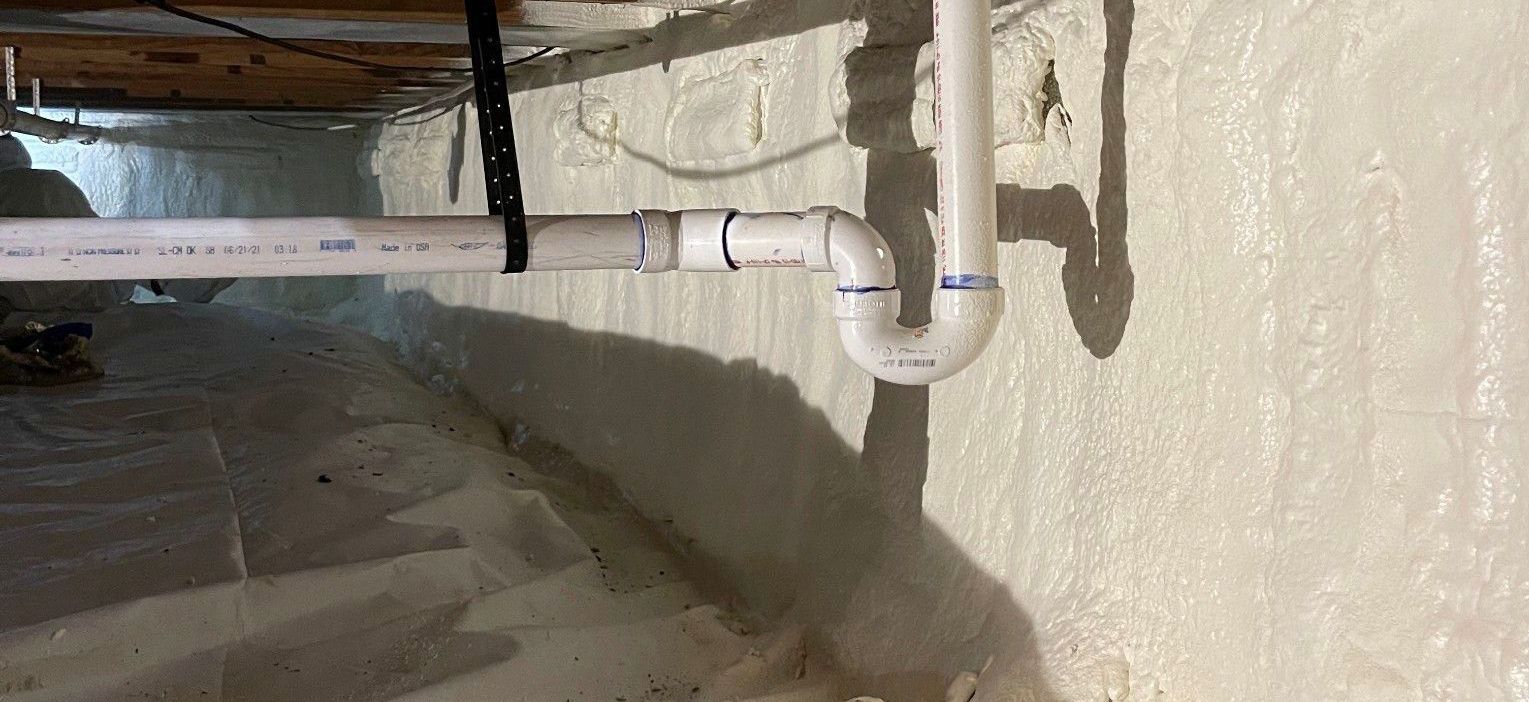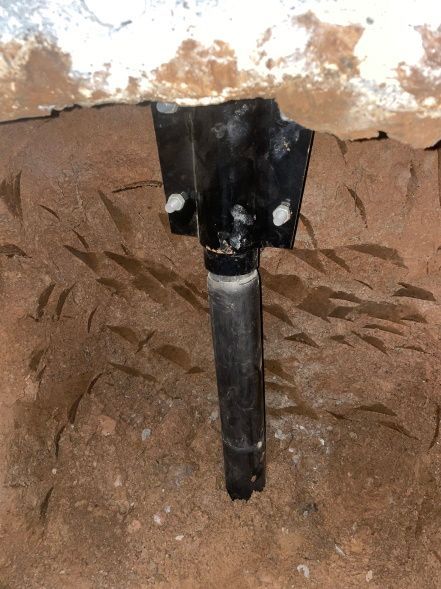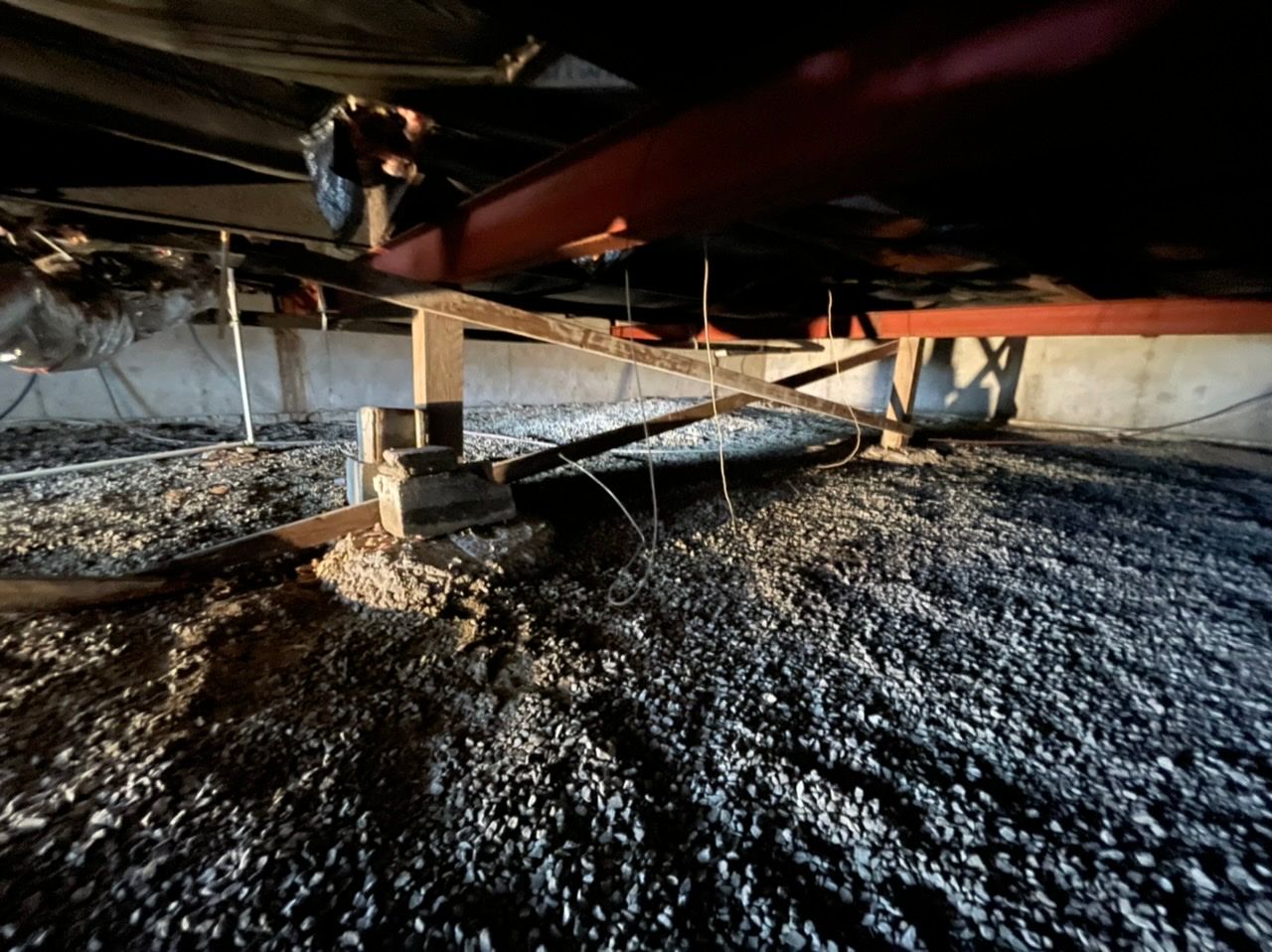The A-to-Z of Sealed Crawl Spaces: Everything You Need to Know
A sealed crawl space can enhance your home.

A sealed crawl space is usually encapsulated using polyethylene water vapor barriers that seal any leaks. This sealing helps to control air and moisture inside the house and prevents insects and toxins from entering. Let's dive into the article to learn all the details about sealed crawl areas.
RELATED: What is the average cost of a crawl space encapsulation in 2023?
What is A Sealed Crawl Space?
To know what a sealed space is, first, you need to know what a crawl space actually is. As the name says, this area is an unfinished platform between the ground and the floor of the building above the ground, with dimensions only suited for crawling.
In most houses, the height of this small basement usually ranges from 1 to 3 feet, making it a narrow area. However, that height is enough to use as storage or easy access for utility service repair and installation. Also, this area acts as a passageway for more than half of the air inside your house.
Moreover, through this basement area, too much moisture, toxic substances, or insects can invade the inside of the house. To deal with these problems, sometimes strong polyethylene is used to create a water vapor barrier. This barrier can seal the area from the outside so that no moisture, insects, or toxins can enter your home.
The sealed crawl space is also known as the encapsulated crawl space. Sometimes you can find houses that have already finished encapsulating this area. However, if it’s not sealed in your house, you’re missing out on all its advantages.
Advantages of Sealed Crawl Spaces
A sealed crawl space comes with so many benefits for the house and its residents. Here are the main advantages of this encapsulated space:
Improved Air Quality
Since the crawl space doesn't allow any excessive moisture to enter the house, the indoor air becomes significantly fresher. It makes the home more comfortable to live in.
RELATED: Would an EZ Breathe ventilation system work for your needs?
Improved House Value
As the sealed basement has many benefits, you can sell the house at a higher price. People also prefer buying a house with a sealed basement area to save time, even if it adds extra expenditure.
No Unwanted Substances
Since the basement space doesn't have any cracks or leaks, unwanted substances like toxins, moisture, insects, or rodents can't get into your house this way. It makes the house safer for the residents.
No structural Damage
Structural components of a house, specifically wooden parts like the floors, can get damaged over time if exposed to moisture for a long time. The sealed crawl space prevents excess moisture, thus protecting the structural damage.
Prevents Health Problems
Both the physical and mental health of the residents depend largely on the air quality, humidity, and cleanliness of the house. Sealed space controls insects, humidity, and temperature, thus preventing health problems.
Low Energy Consumption
When you seal the crawl platform, it not only acts as a barrier but also as an insulator. The indoors will be less humid, and the temperature between the outside and inside of the house will differ significantly. For these reasons, you won't need to use a humidifier, air cooler, or heater that much. It'll eventually cut energy costs.
Sealed Crawl Space vs. Traditional Crawl Space: Which is Better?
When we encapsulate a traditional crawl space, it becomes a sealed crawl space. Needless to say, the traditional area lacks any kind of protection from various leaks. As a result, a traditional one lacks all the benefits that you can get from a sealed space.
For example, there will always be invasions of insects, rodents, and vermin inside your house through the traditional small basement. Also, the inside environment will become so humid from all the moisture coming from this area. Even unwanted toxins can mix with the air inside the basement space and affect indoor air quality.
Although a traditional crawl area doesn’t come with additional costs, the consequences can surely empty your pocket. Your energy bills will keep rising to deal with all the humidity inside; residents will get sick often. Also, they can always be in a bad mood as an effect of excessive humidity.
In the end, you'll need to spend a high amount on energy bills, healthcare services, and therapies. However, you can prevent all these from the beginning just by sealing the basement, because compared to a traditional crawl space, a sealed one is way better.
Understanding the Sealing Process/How to Seal a Crawl Space
The sealing process isn't too complex. You can seal the crawl space yourself, but it can go wrong as the process requires precise work. That’s why it’s better to leave the responsibility to a contracting company, specifically a foundation and waterproofing expert. If you're in the Kansas City area, consider PierMagic Foundation Specialists for all of your encapsulation needs.
However, if you still want to do the job without hiring anyone, you'll need a hand or two in the installation process. Here's the process for sealing this area:
● First, assess the whole basement area above the ground and clean it thoroughly.
● Secondly, measure all the areas you want to seal, like the floors, foundation walls, or roofs.
● Then you need to cut pieces of the polyethylene barrier, but don't do it in the crawl space. Make sure to cut the pieces with larger dimensions so they can overlap when sealing. Also, use safety measures while cutting.
● When you're finished cutting all the needed pieces, it's time to precisely install them.
● You need to prepare the area for installation by adding two-sided sealing tape exactly under the floor joists.
● When installing the vapor barrier, you need to cover the foundation walls first. Make sure the pieces remain consistent along the wall. To do this, you'll need help from others.
● If you want to seal the roof or the underside of the building floor, do it after the wall sealing is finished. You need to seal the floor of the entire crawl area after that.
● The last step is to seal all other kinds of holes or leaks, such as window leaks, door cracks, etc. Make sure they are airtight.
If you're thinking about sealing the crawl space of your house, then go for it; it will be a solid investment. However, you better employ a professional or at least get advice from them before working on sealing. It's to ensure your investment won't go to waste because of any kind of mistake.




